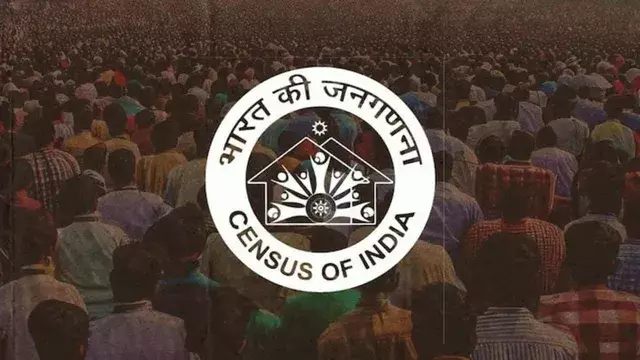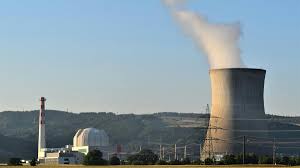- Courses
- GS Full Course 1 Year
- GS Full Course 2 Year
- GS Full Course 3 Year
- GS Full Course Till Selection
- Answer Alpha: Mains 2025 Mentorship
- MEP (Mains Enrichment Programme) Data, Facts
- Essay Target – 150+ Marks
- Online Program
- GS Recorded Course
- Polity
- Geography
- Economy
- Ancient, Medieval and Art & Culture AMAC
- Modern India, Post Independence & World History
- Environment
- Governance
- Science & Technology
- International Relations and Internal Security
- Disaster Management
- Ethics
- NCERT Current Affairs
- Indian Society and Social Issue
- NCERT- Science and Technology
- NCERT - Geography
- NCERT - Ancient History
- NCERT- World History
- NCERT Modern History
- CSAT
- 5 LAYERED ARJUNA Mentorship
- Public Administration Optional
- ABOUT US
- OUR TOPPERS
- TEST SERIES
- FREE STUDY MATERIAL
- VIDEOS
- CONTACT US
India's Scientific Deep-Drilling Programme
India's Scientific Deep-Drilling Programme
India is drilling a 6-km deep hole in Maharashtra as part of its scientific deep-drilling programme to study reservoir-triggered earthquakes in the Koyna-Warna region. The programme aims to expand our understanding of earthquakes and improve our ability to predict them.
What is Scientific Deep Drilling?
Scientific deep drilling involves strategically digging boreholes to analyze deeper parts of the earth's crust. It offers opportunities to study:
- Earthquakes
- The planet's history
- Rock types
- Energy resources
- Life forms
- Climate change patterns
About Borehole Geophysics Research Laboratory (BGRL)
- Location: Karad, Maharashtra
- Affiliation: Ministry of Earth Sciences
- Mandate: Execute India’s sole scientific deep-drilling programme
Objectives:
- Drill the earth’s crust to a depth of 6 km
- Study reservoir-triggered earthquakes in the Koyna-Warna region
Background:
- The Koyna-Warna region has experienced frequent earthquakes since the Koyna Dam (Shivaji Sagar Lake) was impounded in 1962.
- A 3-km-deep pilot borehole in Koyna is complete, with the aim to reach 6 km.
Drilling Strategy:
- A hybrid of mud rotary drilling and air hammering.
Benefits of a Deep-Drilling Mission
- In Situ Experiments: Provides direct and unique experiments and observations, monitoring fault lines and seismic behavior.
- Earth's Crust Knowledge: Offers exact knowledge of the composition, structure, and processes of the earth's crust.
- Model Validation: Helps validate models based on surface studies.
- Societal Problems: Informs a range of societal problems related to geohazards and geo-resources.
- Scientific and Technological Innovation: Spurs development in seismology, drilling tools, observation equipment, data analysis, and sensors.
Challenges of Scientific Deep Drilling
- Labor and Capital Intensive: Requires significant investment and manpower.
- Hostile Environment: The earth's interior is hot, dark, and high-pressure, complicating operations.
- Fractured Rocks: Drilling through fractured rocks in the Koyna seismic zone presents risks, such as drill rods and sensors getting stuck.
Drilling Technique
- Hybrid Method: Combines mud rotary drilling and air hammering.
- Equipment: Uses a rotating steel drilling rod with a diamond-embedded drill bit.
- Drilling Mud: Flushed through the rod to cool the drill bit and bring rock cuttings to the surface.
What Have Scientists Found?
- Geological Discoveries:
- 1.2-km thick, 65 million-year-old Deccan trap lava flows
- 2,500-2,700-million-year-old granitic basement rocks
- Subsurface Data: Core samples and downhole measurements have provided information on:
- Physical and mechanical properties of rocks
- Chemical and isotopic composition of formation fluids and gases
- Temperature and stress regimes
- Fracture orientations
What Next?
- Future Drilling: Pilot data will inform future drilling plans.
- Modelling Experiments: Suggest temperatures at 6 km could be 110-130 degrees C.
- Equipment Design: Drilling equipment, data acquisition systems, and sensors need to be designed for these conditions.
- New Experiments: Over 20 research groups nationwide are studying the Koyna samples.
Implications:
The Koyna exercise is establishing a firm footing in scientific deep-drilling for India. Its lessons will inform future deep-drilling experiments and expand academic knowledge in multiple ways. The programme has implications for:
- Earthquake Understanding: Improves understanding of earthquakes.
- Scientific and Technological Innovation: Expands scientific know-how and technological innovation.
- Societal Problems: Informs societal problems related to geohazards and geo-resources.
Earth's Interior Insights: Provides valuable insights into the earth's interior, contributing to our understanding of the planet's history, climate change, and natural resources.



